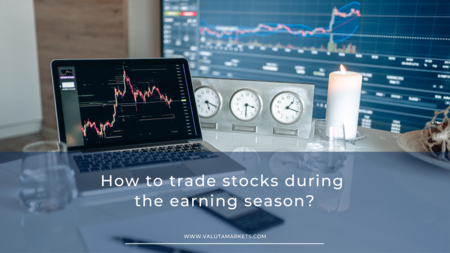The earning season often lasts six weeks, and during this time, publicly traded companies release their earnings reports. It is a critical period for individual and institutional investors that rely on reviews made on companies’ earnings to determine the value of their stocks.
While there are often no particular dates for the reports, most publicly traded companies generally report their financial results during the period. There are four earning seasons in a year, quarterly, and often fall about two weeks after the end of a quarter.
Both short-term and long-term investors are excited to go through the financial reports and capture executives’ comments as the reports impact their positions. During the earning seasons, the market is characterized by volatility, depending on how analysts’ and investors’ expectations match the reality.
The earning season also affects the investors’ stock level decisions and the overall expectations of the market. Due to the price swings, returns on investments can be influenced significantly as it is likely for the stock price to rise or decline after the reports.
These movements can create great trading opportunities. Here are some trading tips for the earning seasons.
1. Select Focus Companies
To make research easy, you have to narrow down the companies that caught your attention. Once you choose the companies, your job becomes easy. The research will be more focused, and you will have time to monitor reports from specific stocks.
Check the news regularly before the earning season sets in. This will also give you insights into other factors like geopolitics and acquisitions that can affect the stocks’ price movements.
2. Research
You need to be aware of critical information about the companies you choose, such as the key sources of revenue. Some companies have multiple sources of revenue, and from the reports and other macro-economic factors, you can establish how the stocks may be affected.
It is also essential to find out what analysts are forecasting in regards to the stocks, as this information can help you decide on your stock investments. Alternatively, you can use the information to challenge your strategy.
3. Forecast
It would be best if you had something to work with. Once you have completed your research and interacted with analysts’ opinions, you can develop your strategy. Before you decide to trade a stock when there are movements during the earning period, you should already know the direction you want to take.
Therefore, make a forecast by identifying the probable direction the stocks could go. Why is this stage critical? It is the best way to identify the most effective strategies to employ whether the stocks go up or down.
While making your forecasts, you also need to consider the possibility of general market momentum influencing the stock.
4. Stay Alert to Breakaway Gaps
Seasoned investors understand the impact of breakaway gaps on stocks. This is, therefore, something worth looking out for in the earning season. Breakaway gas often leads to significant gains. This is the strong price movement that happens through resistance or support.
One thing that happens when the earning seasons are in full swing is a breakaway gap emanating from positive results. The gap occurs when the buying demand significantly outpaces the current supply, increasing the share price.
Breakaway gaps are significant because they jumpstart strong market trends with a high risk-to-reward ratio. The most profitable trading strategy for you would be joining a trend as early as possible, and breakaway gaps are the indicators you need.
There are several ways to trade breakaway gap, such as the aggressive method, whereby you enter immediately after the gap, or employ the conservative method, whereby you enter after a pullback.
To get the biggest gains with the breakaway gap, you could project a target with a runaway gap, run profits with a trailing stop-loss or use chart formation to project the target.
5. Look Beyond The Company’s Projected Earnings (Consensus)
Traders must recognize that consensus estimates have shortcomings even in the earning seasons. You can leverage the shortcomings to benefit your trade. Note that the consensus estimates are a public company’s forecasted earnings arrived at by getting an average of the available estimates. The drawback of consensus estimates is that they don’t always capture the projections of the best analysts, meaning they can be inaccurate.
As an investor, it is important to stay proactive, identify the analyst with the best track record, and leverage their forecasts instead of relying on consensus alone.
Conclusion
Analysts employ a wide range of tools to come up with estimates for earnings. Some of the resources they use include past performance, the net income of companies, and management guidance.
While analysts’ opinion contributes significantly to traders’ decisions during the earning season, it is essential to have your own trading strategy. Do research, make predictions, and develop trading strategies for the stocks’ direction.

